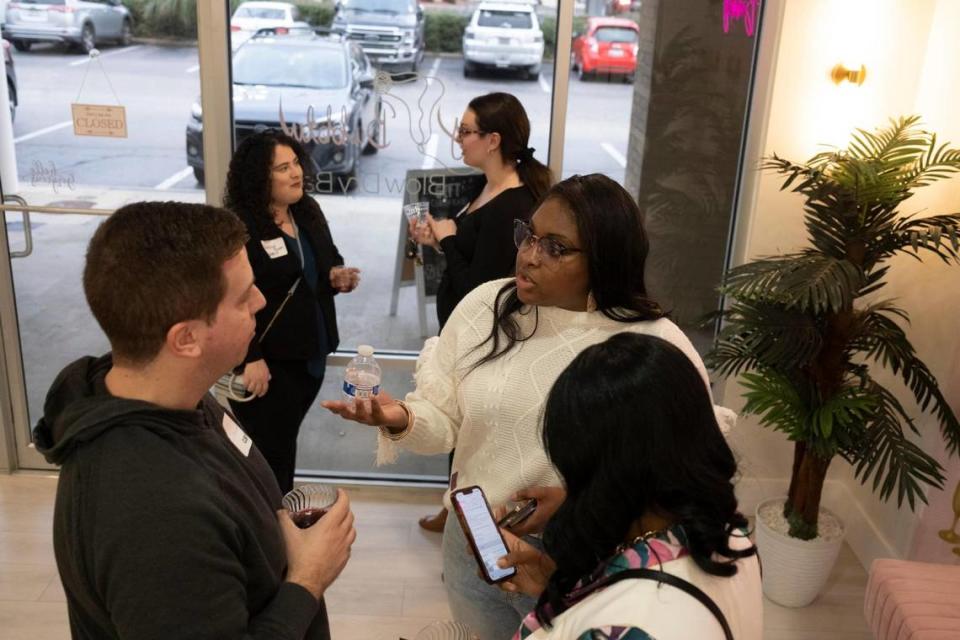Myrtle Beach to court young talent as it aims to unlock downtown potential
Inside her newly opened business, 21-year-old owner Lilli Terhart took a breath amid the bustle around her.
Salons like hers, which offer clarifying scrubs and scalp massages, are common sites on New York and San Francisco — but Terhart’s Dry & Bubbly is the only one of its kind in Myrtle Beach.
“I think it’s a growing city with Coastal and (Horry-Georgetown) Tech and everything else. There’s a bunch of young people moving down from the north as college kids, going to school and navigating their life, and I think it’s really cool seeing it all come full circle,” Terhart said.
Terhart doesn’t just operate Dry & Bubbly alongside her mother, Aimee, she also lives in the city — among the 79 percent of its population under 18 through 64 years old, according to 2021 Census data.
The median age of a Myrtle Beach resident that year was 45.7.
“We agree with the assessment that young professionals are the future of our community, and are particularly important as it relates to the revitalization efforts of our downtown,” Myrtle Beach Area Chamber of Commerce president and CEO Karen Riordan said.
“We want those folks staying in our market to complete their education, get their training, get their skills and then ideally stay and become part of the workforce.”
Since 2008, the chamber has sponsored a Grand Strand Young Professionals chapter — open to people between the ages of 20 and 41. Members get together for social events, networking and training and other activities.
Riordan said the organization currently is up to 250 people.
So as city leaders chart a future for its downtown arts and innovation district, the needs of millennial and Gen Z residents like Terhart are being considered on the front end of urban planning and design — ideas outdoor plazas and spots for trendy boutiques meeting upper level apartment spaces are sprinkled through the district’s master plan.
“Main Street— the physical space — what makes it great is having existing, historic buildings that are uniquely designed from decades ago, that are still incredibly value, that tell a history of the community but are still able to be used in new ways,” said Main Street South Carolina program manager Jenny Boulware.
“Former post offices are being repurposed to art centers. Former five and dimes are now being used for antique booth locations with lofts above. Finding that historic fabric and its value and repositioning it for today’s use is critical.”
A 2018 paper published by Rice University’s Kinder Institute for Urban Research focused on efforts in Houston and Phoenix to draw younger year-round residents — both cities have created tax incentives to spur downtown housing, enjoy robust public transit systems and have clustered cultural assets in frequently accessible areas.
And looking at a Feb. 3 listing of America’s best cities for young professionals ranked by self-storage company SpaceWise shows common themes that led places like Austin, Texas, Boston, Denver, Minneapolis, Salt Lake City and Washington to be included: Nightlife, affordability and career opportunities.
On a January night inside Terhart’s salon a group of Grand Strand Young Professionals mingled and sipped on wine.
Jasmine Chestnut, 25, has spent her life in Myrtle Beach. With its powerhouse hospitality sector and a strong healthcare and real estate industry, Chestnut believes South Carolina’s landmark city is ready to be one of the next great places for young people to call home.
“Now that I’m out in the professional world, I’ve noticed a lot of young people are looking for more professional jobs and not just in the retail or restaurant business,” Chestnut, who works in finance, said. “And it’s great for the Myrtle Beach area, because it’s growing so fast.”



